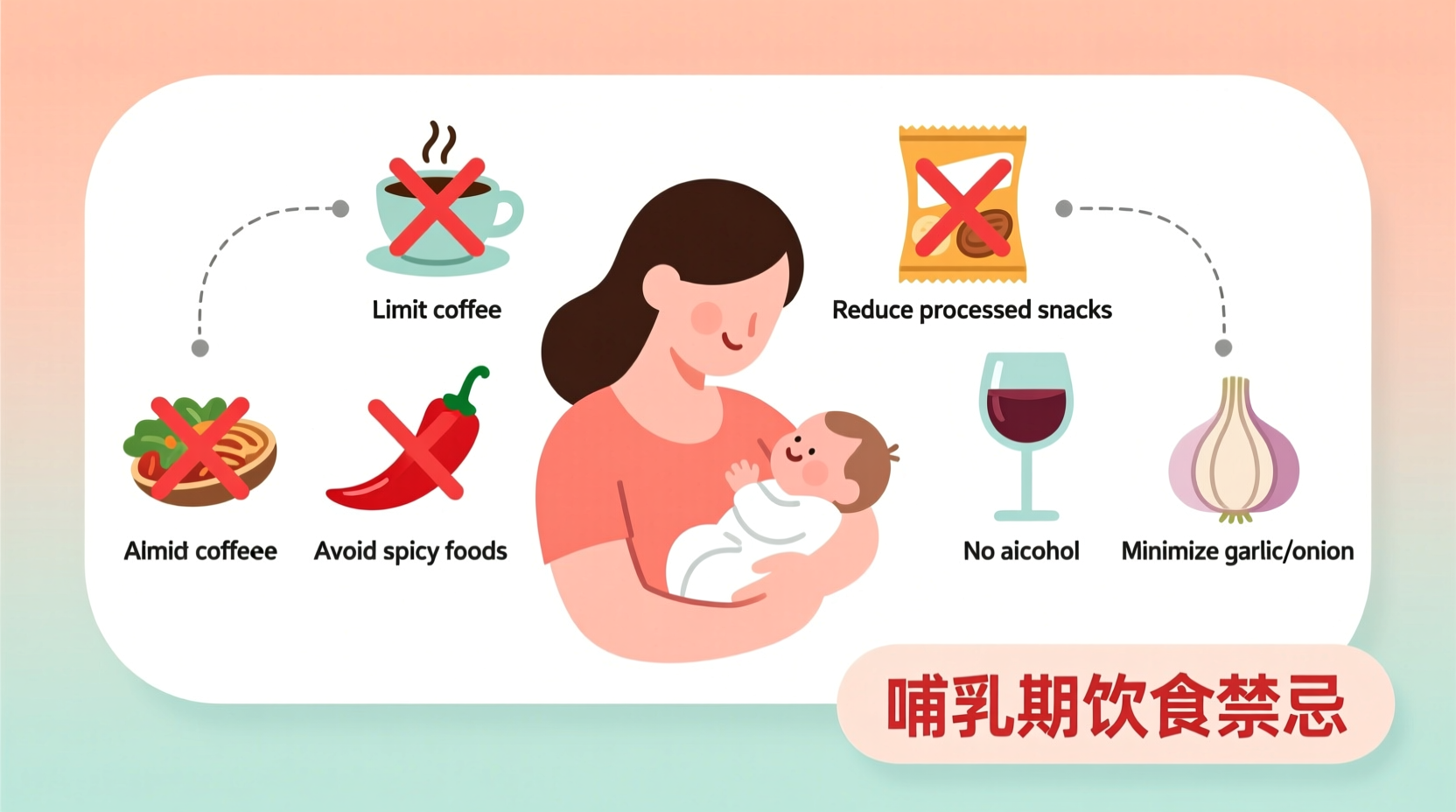Based on current medical research, the top foods to avoid while breastfeeding include excessive caffeine (limit to 200-300mg daily), alcohol (avoid or consume minimally with proper timing), certain high-mercury fish (shark, swordfish, king mackerel), and for some infants, common allergens like cow's dairy, soy, peanuts, and eggs. Most foods are safe in moderation, but approximately 1% of exclusively breastfed infants show food sensitivities requiring dietary adjustments.
As a new parent navigating breastfeeding, you're likely overwhelmed with conflicting advice about what to eat. You want clear, evidence-based guidance that helps you make informed choices without unnecessary restrictions. This comprehensive guide cuts through the noise with medically-verified information about foods that may affect your breastfed baby, backed by current research from leading health authorities.
Understanding Food Transfer to Breast Milk
Before diving into specific foods, it's crucial to understand how dietary components reach your baby. Only trace amounts of what you eat actually transfer to breast milk, and most foods don't cause problems. According to the Centers for Disease Control and Prevention, the vast majority of breastfeeding mothers can maintain a normal, healthy diet without restrictions.
Research from the National Institutes of Health shows that food proteins appear in breast milk in minute quantities, typically peaking 1-6 hours after consumption. This explains why reactions, when they occur, usually manifest within this timeframe. Most babies tolerate their mother's varied diet without issues, as early exposure may even help build tolerance to potential allergens.

Top Foods Requiring Caution During Breastfeeding
Caffeine: Finding the Right Balance
Caffeine passes into breast milk and can accumulate in your baby's system since infants metabolize it slowly. While complete avoidance isn't necessary, moderation is key. The American Academy of Pediatrics recommends limiting caffeine to 200-300mg daily (about 2-3 cups of coffee).
Watch for these signs your baby may be sensitive to caffeine: difficulty sleeping, increased fussiness, or rapid heartbeat. If you notice these symptoms, try reducing your intake or consuming caffeine immediately after breastfeeding to allow more time for metabolism before the next feeding.
Alcohol: Timing Matters More Than Complete Avoidance
Contrary to popular belief, you don't need to "pump and dump" after drinking alcohol. The Mayo Clinic explains that alcohol leaves your system at the same rate it leaves your milk. As a general rule, wait 2 hours per standard drink before nursing again.
| Alcohol Type | Standard Serving | Recommended Wait Time Before Nursing |
|---|---|---|
| Beer (5% alcohol) | 12 ounces | 2 hours |
| Wine (12% alcohol) | 5 ounces | 2 hours |
| Liquor (40% alcohol) | 1.5 ounces | 2 hours |
High-Mercury Fish: Select Wisely
Fish provides valuable omega-3 fatty acids important for your baby's development, but certain varieties contain concerning mercury levels. The FDA and EPA jointly recommend avoiding shark, swordfish, king mackerel, and tilefish due to high mercury content.
Instead, choose lower-mercury options like salmon, shrimp, pollock, light canned tuna, and catfish (limit albacore tuna to 6 ounces weekly). These provide nutritional benefits without the mercury risk. A 2022 study published in Nutrients found that moderate fish consumption during breastfeeding correlated with improved cognitive development in infants.
Common Food Sensitivities in Breastfed Infants
While true food allergies are rare in exclusively breastfed infants (affecting approximately 0.5% of babies), some may show sensitivity to certain foods in your diet. The most common culprits include:
- Dairy products - cow's milk protein
- Soy - often found in processed foods
- Wheat and gluten
- Eggs
- Peanuts and tree nuts
- Shellfish
It's important to note that most babies tolerate these foods without issue. The Academy of Nutrition and Dietetics emphasizes that maternal dietary restrictions should only be implemented when a clear connection between food consumption and infant symptoms has been established.
Recognizing Potential Food Sensitivities
Symptoms that might indicate your baby is reacting to something in your diet include:
- Excessive crying or colic-like symptoms
- Skin reactions like eczema or hives
- Gastrointestinal issues (diarrhea, constipation, bloody stools)
- Respiratory symptoms (wheezing, congestion)
- Poor weight gain
Remember that these symptoms can also indicate other medical conditions, so always consult your pediatrician before making significant dietary changes.
Practical Strategies for Managing Your Diet While Breastfeeding
Implementing an Elimination Diet Safely
If you suspect your baby reacts to something in your diet, an elimination diet can help identify triggers. The La Leche League International recommends this evidence-based approach:
- Keep a detailed food and symptom diary for 1-2 weeks
- Eliminate one suspected food at a time for 2-3 weeks
- Reintroduce the food to observe reactions
- Work with a healthcare provider or registered dietitian
Avoid eliminating multiple foods simultaneously, as this makes identifying the true culprit impossible and may lead to nutritional deficiencies in both you and your baby.
Nutritional Considerations During Elimination
When removing foods from your diet, ensure you're replacing lost nutrients. For example:
- If eliminating dairy: incorporate calcium-rich alternatives like fortified plant milks, leafy greens, and almonds
- If eliminating wheat: use quinoa, rice, and oats for fiber and B vitamins
- If eliminating soy: include lentils, chickpeas, and other legumes for protein
Consult a registered dietitian specializing in maternal nutrition to ensure your elimination diet remains nutritionally complete.
Contextual Factors That Influence Food Reactions
Understanding the boundaries of when foods might cause issues is crucial. Research shows significant variability in infant reactions based on several contextual factors:
- Baby's age - younger infants (under 3 months) are more likely to react to dietary components
- Family allergy history - babies with family history of allergies may be more sensitive
- Amount consumed - small quantities often cause no reaction while larger amounts might
- Frequency of exposure - occasional consumption may be tolerated better than daily
- Processing method - cooked dairy may be better tolerated than raw
A 2023 review in the Journal of Human Lactation found that only 0.3-0.5% of exclusively breastfed infants show true food protein-induced allergic proctocolitis, primarily to cow's milk protein. This highlights that most breastfeeding mothers can enjoy diverse diets without concern.
When to Seek Professional Guidance
While many new parents worry about their diet's impact on breastfeeding, most concerns are unfounded. However, consult your healthcare provider if:
- Your baby shows severe symptoms like projectile vomiting, significant blood in stool, or breathing difficulties
- You're considering eliminating multiple food groups from your diet
- You're experiencing nutritional deficiencies or weight loss
- Your baby isn't gaining weight appropriately
Remember that breastfeeding offers tremendous benefits that far outweigh minor dietary concerns for most mothers. The World Health Organization recommends exclusive breastfeeding for the first 6 months, with continued breastfeeding alongside complementary foods for up to 2 years or beyond.











 浙公网安备
33010002000092号
浙公网安备
33010002000092号 浙B2-20120091-4
浙B2-20120091-4